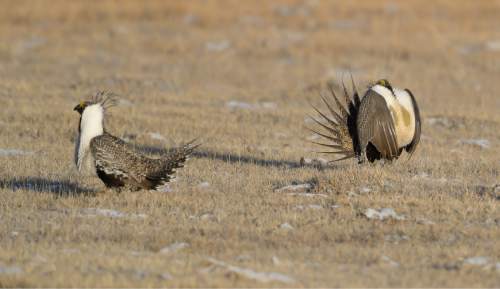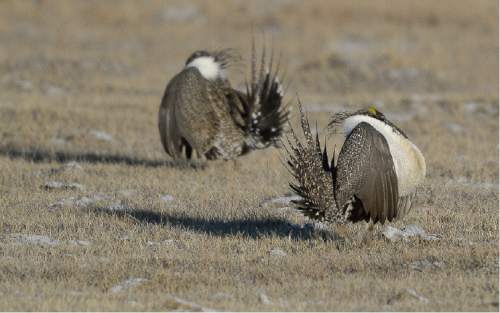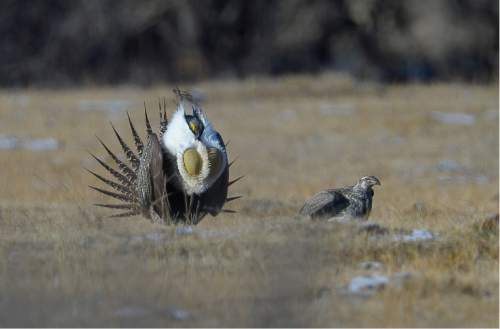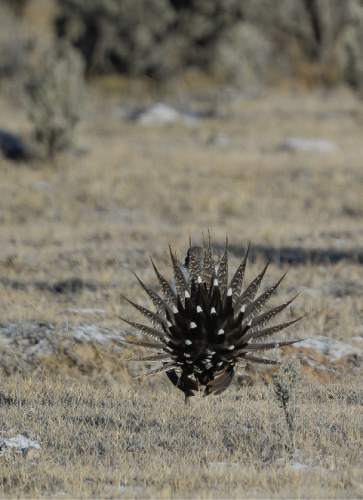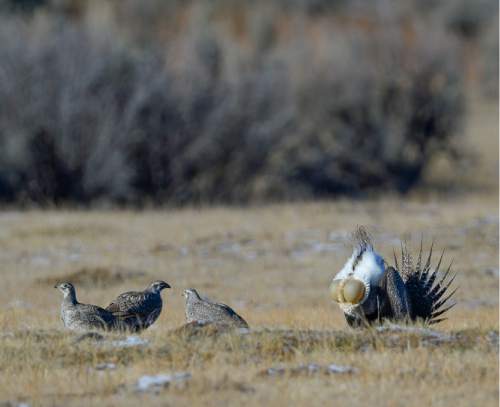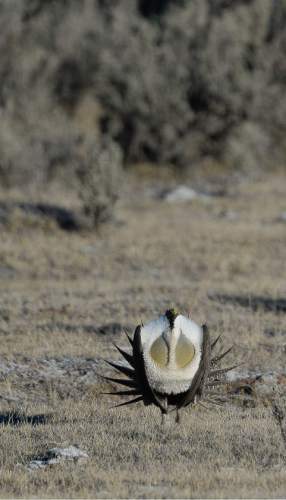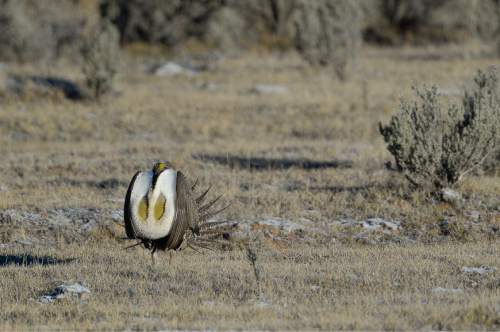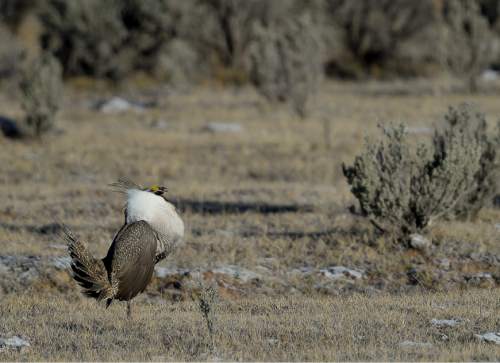This is an archived article that was published on sltrib.com in 2015, and information in the article may be outdated. It is provided only for personal research purposes and may not be reprinted.
Determining the health of Utah's greater sage grouse is no simple matter. Take the birds at Parker Mountain.
But few chicks survived to maturity.
Closer inspection revealed that the sagebrush had grown so thick it had choked out the chicks' food sources, said Terry Messmer, a Utah State University professor who heads a community-based sage grouse conservation initiative.
Many scientists wrote off the area's sage grouse decline as irreversible. "It was a tough thing," Messmer said. "They said, 'If you can keep the 150 birds you've counted, you're doing a good job.' "
But an experimental treatment that removed some of the sagebrush from the plateau resulted in the highest chick survival rate ever recorded, Messmer said. The population is now in the thousands, rather than the hundreds.
Inspired by this success, habitat managers at Deseret Land and Livestock in northeastern Utah cleared out their sagebrush. But after the harsh winter in 2010, the population crashed.
That kind of disparity isn't unusual for Utah. The bird's resilience varies dramatically between the fragmented, isolated pockets of habitat that dot Utah.
And so do the threats.
In western Utah, wildfire, depredation and encroachment of pinyon and juniper are chief threats, while mining and drilling degrade and fragment habitats in the eastern part of the state.
And, unlike Wyoming and Nevada's sage grouse, which occupy large contiguous sagebrush habitats, Messmer noted, Utah's populations have nowhere to go if their home ranges are destroyed.
The state already has a relatively small portion of the West's sage grouse habitat — just 4 percent. But the isolated, fragmented populations may play an important role in maintaining the genetic viability of the species, because Utah's birds occasionally migrate to larger sage grouse territories in neighboring states, said Steve Hanser, a sage grouse specialist with the U.S. Geological Survey.
"The smaller ones might serve as steppingstones that provide important connectivity between larger areas," Hanser said. "In Utah, that would be one of those areas — an area of connectivity."
—
No easy fix • Another struggling sage grouse population is in the Sheeprock Mountains near Vernon in Tooele County. Confined to a relatively small piece of habitat, the birds haven't responded to habitat improvement projects, such as juniper removal, Messmer said, and their population remains low.
The Sheeprock sage grouse face challenges typical of most populations in the southern quarter of the Great Basin — notably wildfires. Blazes have increased in frequency in the area in the past 30 years, Hanser said, and they now occur both earlier and later in the season than they used to. The ground cleared by fire is often overtaken by cheatgrass, an invasive weed that is highly flammable and in turn increases the probability of wildfire.
"We are looking at what we can do within our discretion to limit those threats. We want to make a decision based on science and [that] is defensible based on that input, and we feel we have done so," said Bureau of Land Management biologist Quincy Bahr, who coordinated the Utah portion of the federal plan. "We didn't get to the situation we have with sage grouse with a single threat, and it won't be solved with one tool."
Twenty years ago, the Strawberry population, located about 100 miles east, was similar to the Sheeprock sage grouse, Messmer said. The birds there began to decline in response to the arrival of nonnative predators and the spread of juniper trees. The expansion of Strawberry Reservoir in the 1980s made special federal conservation funds available that the state tapped to kill predators and remove juniper, Messmer said, and the sage grouse population appears now to be thriving.
"Folks really need to think about, or have some understanding of how really complex this whole sagebrush ecosystem is," said San Stiver, sage grouse coordinator for the Western Association of Fish and Wildlife Agencies. "It's not really an easy fix anywhere."
—
Counting sage grouse before they're matched • Generally speaking, biologists believe Utah's sage grouse are doing well. The bird's population has seen dramatic growth in the state — year-over-year increases of up to 40 percent — since 2011. But those numbers can be confusing; the greater sage grouse, like most game birds, experience a pattern of population growth and decline that cycles every nine to 12 years.
The recent population upswing across the West is just part of the normal growth cycle — overall, the sage grouse population has grown by an estimated 0.7 percent in the past 50 years, Messmer said.
Still, the current population boom appears to have begun earlier in Utah, Stiver said. Whereas most sage grouse counts in other Western sites were low in 2013 and have since increased, he said, Utah's populations started their cyclical climb in 2011.
And all these estimates, Messmer said, are just that — estimates.
"We don't know how many sage grouse are out there because they're pretty tough to count."
What wildlife officials can count, Messmer said, is the number of males that gather at leks; the birds tend to return to the same ones year after year.
So researchers survey the known leks, then average the number of males counted at all of them to draw conclusions about how the sage grouse population fared during the past 12 months. More males suggests better chick survival. Fewer males, not so much.
There are a few problems with this assumption, Messmer said, including the fact that scientists often discover new leks that were not included in past years' counts.
"We're one of the few states with a positive trend since we first started counting in 1965," he said. "But some of that is because we've gotten better at counting them."
epenrod@sltrib.com
Twitter: @EmaPen Sage grouse threats
• Wildfire, cheat grass and
drought (especially in the Great
Basin)
• Juniper encroachment (central Utah)
• Human development (eastern and mountainous populations)
• Invasive predators, including red fox, raccoons and ravens
• Habitat fragmentation
• Loss of genetic diversity
• Loss of ecosystem diversity


